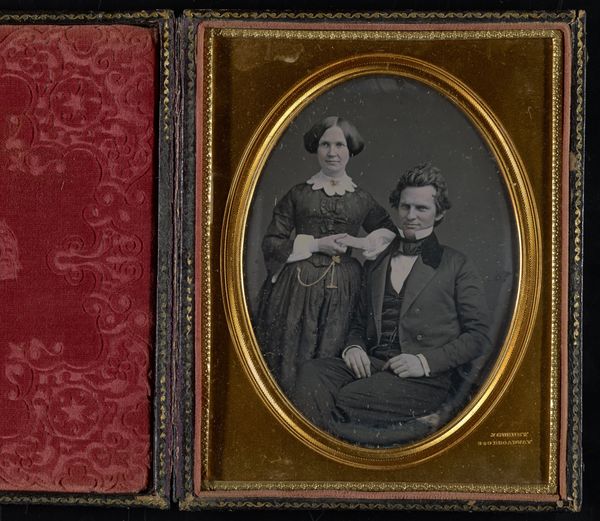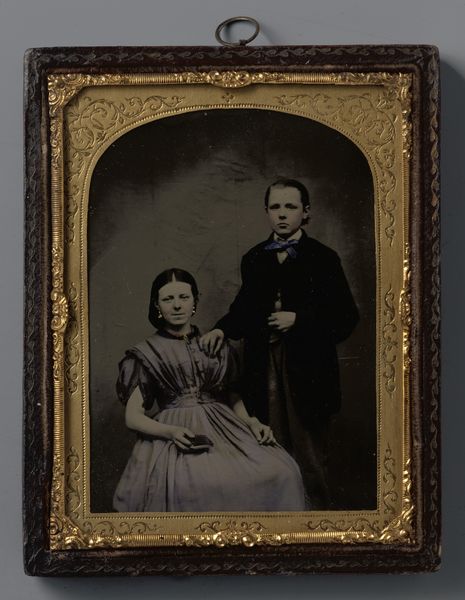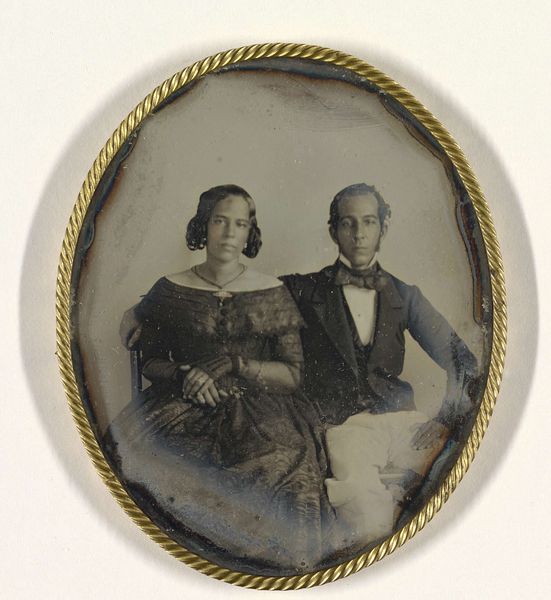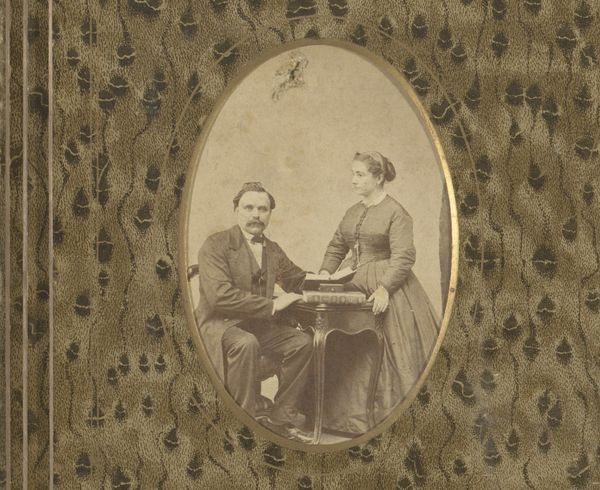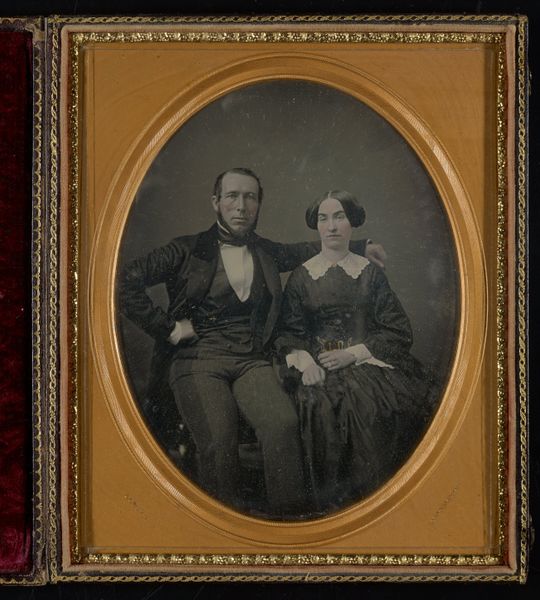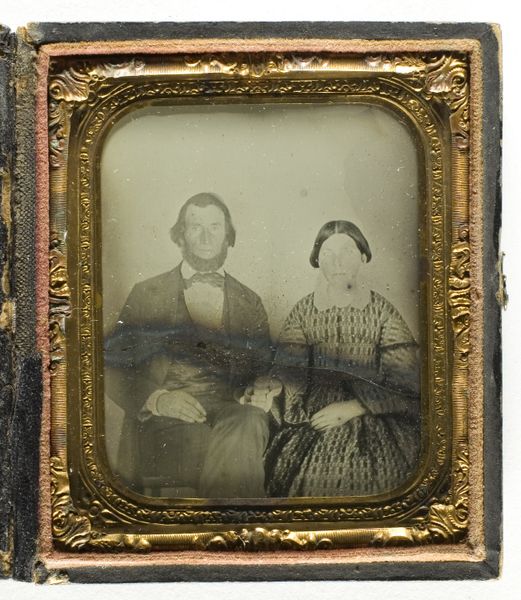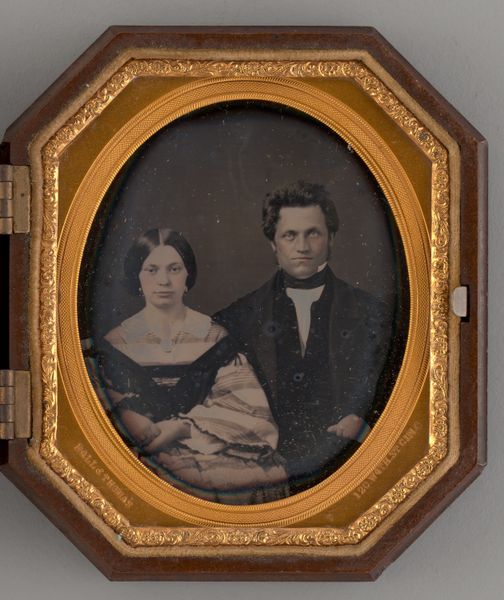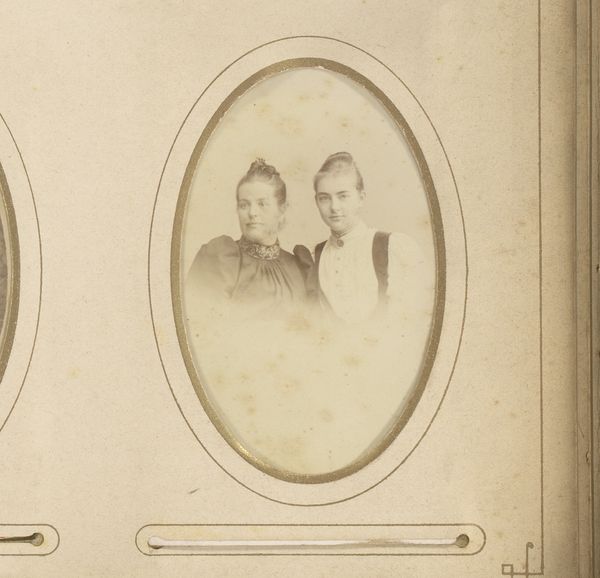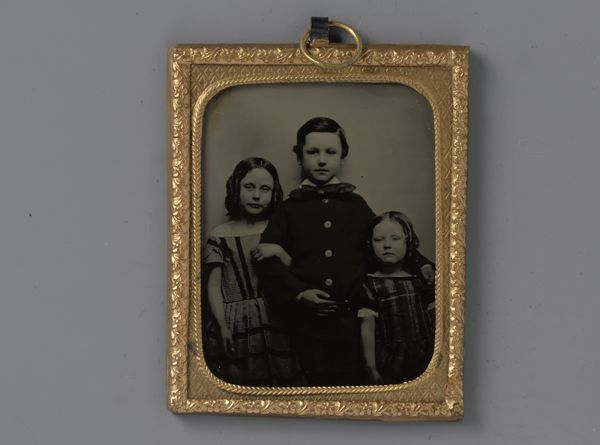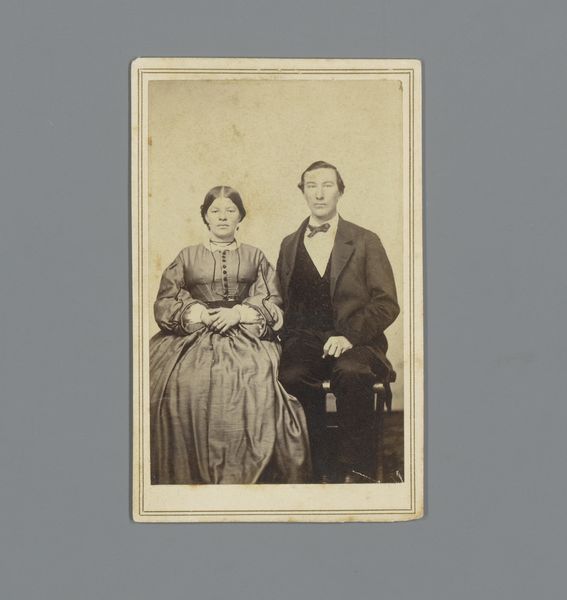
daguerreotype, photography
#
portrait
#
16_19th-century
#
sculpture
#
daguerreotype
#
photography
#
group-portraits
#
decorative-art
#
decorative art
Dimensions: 8.3 × 7 cm (plate); 9.3 × 8 × 1.5 cm (case)
Copyright: Public Domain
Editor: So, this is an *Untitled* daguerreotype, probably from somewhere between 1839 and 1899. The Art Institute of Chicago just lists it as anonymous. I am immediately drawn to the ornateness of the framing – all that gilded floral detail. What speaks to you when you look at it? Curator: Well, darling, imagine holding history in the palm of your hand! Isn't it wonderful how a tiny object can be so very telling? I mean, forget the *Mona Lisa* for a moment, what about the stories embedded in everyday life? Look closer. It's a study in contrasts – the dark clothing, almost merging into the background, set against the ornate, light-catching frame. A certain austerity paired with unapologetic opulence. Almost feels like looking at two different souls intertwined, doesn’t it? Do you feel that contrast? Editor: Definitely! It feels almost… performative? The couple seems so serious, but then the frame is trying to distract you with its shiny details. Curator: Precisely! Perhaps that seriousness *is* the performance. Daguerreotypes were such a novelty then; imagine the *solemnity* of sitting for one! It wasn't like whipping out a smartphone for a selfie. It’s also like gazing into a looking glass that reminds you you’re peering into their long-ago yesterday. A memory box, don't you think? What do you suppose they felt as that image imprinted? Anxiety, hope, trepidation? It's delicious! Editor: That’s a fantastic point. The preciousness of the process really reframes the image – pardon the pun! I hadn’t thought about it that way. Curator: Darling, the best art always reframes *something*. It’s like life—glimpsed anew through a perfectly peculiar window. Editor: I agree. I’ll never look at another daguerreotype the same way again.
Comments
No comments
Be the first to comment and join the conversation on the ultimate creative platform.
